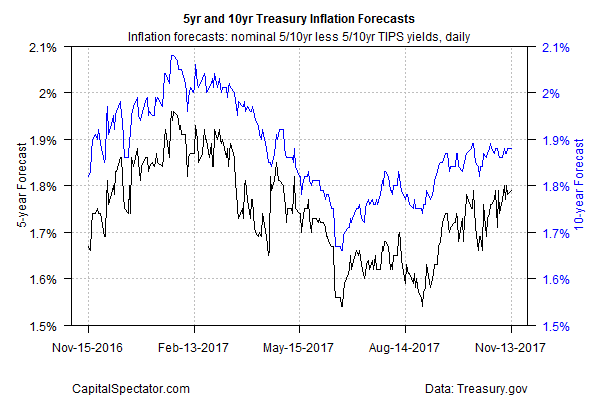The Federal Reserve has been trying to lift the inflation trend in recent years with limited success. Key measures of the price trend remain below the central bank’s 2.0% target and recent data point to more of the same for the immediate future. But there are hints that the inflation is stabilizing, perhaps laying the groundwork for creeping higher in the new year.
Consider yesterday’s monthly report on consumer inflation expectations via the New York Fed. The public’s median year-ahead outlook ticked up to 2.61% in October, the second monthly advance and the highest level since April. Meanwhile, the three-year outlook was fractionally up at 2.81%, also the highest since April.
It’s too soon to draw conclusions, but consumer expectations appear to suggest that inflation’s trend will at least hold steady in the near term. If so, the Fed will see that as a minor victory.
Tomorrow’s hard data on consumer inflation for October, however, is expected to show a slightly softer trend for the year-over-year change at the headline level (+2.0%) and a steady trend for core CPI (+1.7%), according to Econoday.com’s consensus forecast.
Note, however, that the Treasury market’s implied inflation outlook has rebounded in recent months and is currently close to the highest level since the spring. For example, the yield spread for the nominal 10-year Note less its inflation-indexed counterpart held at 1.88% yesterday (Nov. 13), which is close the highest rate since April.

The Treasury data is a factor that’s convincing the crowd that the Fed will raise rates again at next month’s policy meeting. Fed funds futures are currently pricing in a near certainty that the central bank will lift its target rate on Dec. 13, based on CME data.
There’s still reason for doubt, of course. Notably, the one-year trend in wage growth decelerated last month to 2.4%, the softest pace since early 2016.














Leave A Comment